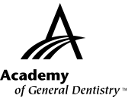|
Exercise No. 353
Subject Code: 674
Fixed Removable Hybrid Prosthesis
The 15 questions for this exercise are based on the article, “Revisiting implant-retained mandibular overdentures: planning according to treatment needs”, on pages 60-64. This exercise was developed by Merlin Ohmer, DDS, FAGD, in association with the General Dentistry Self-Instruction committee.
|
Reading the article and completing the exercise will enable the reader to:
- better understand overdenture concepts;
- comprehend the use of implants to help retain mandibular overdentures; and
- recognize the variation in implant-retained mandibular overdentures.
|

